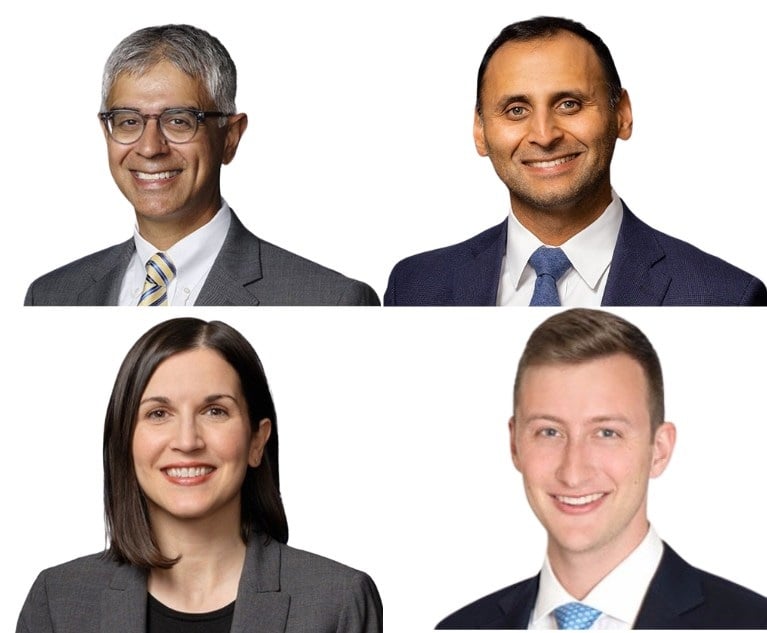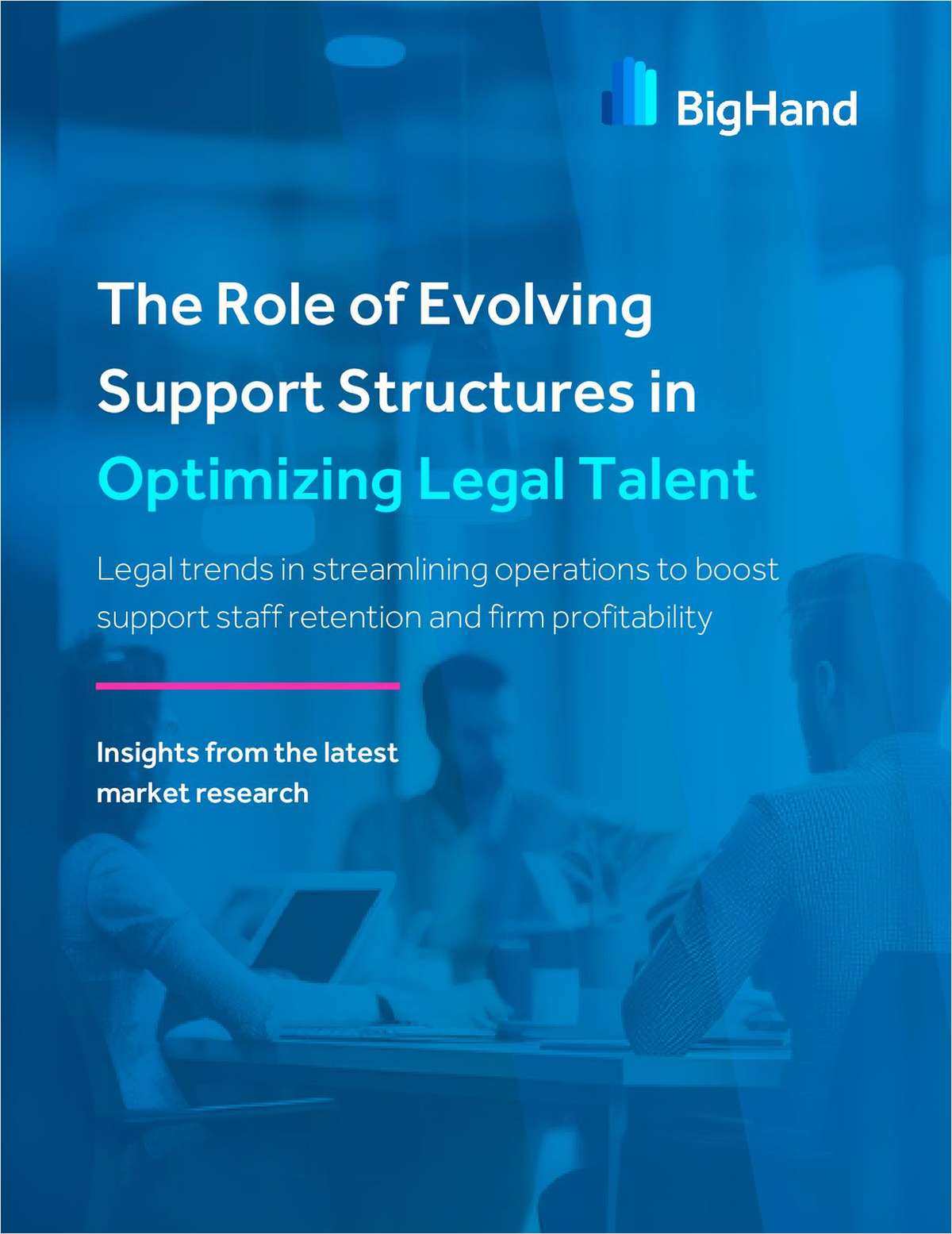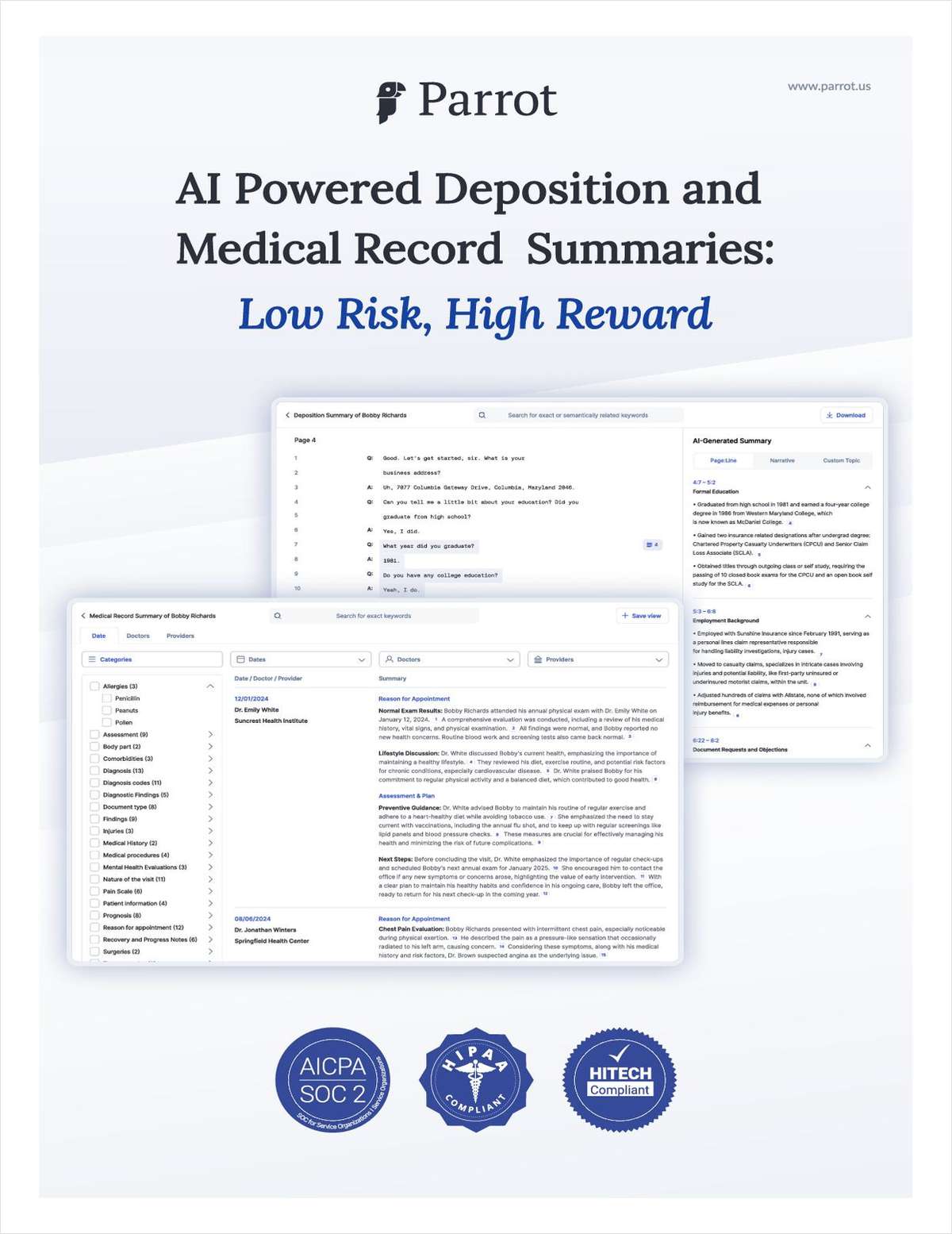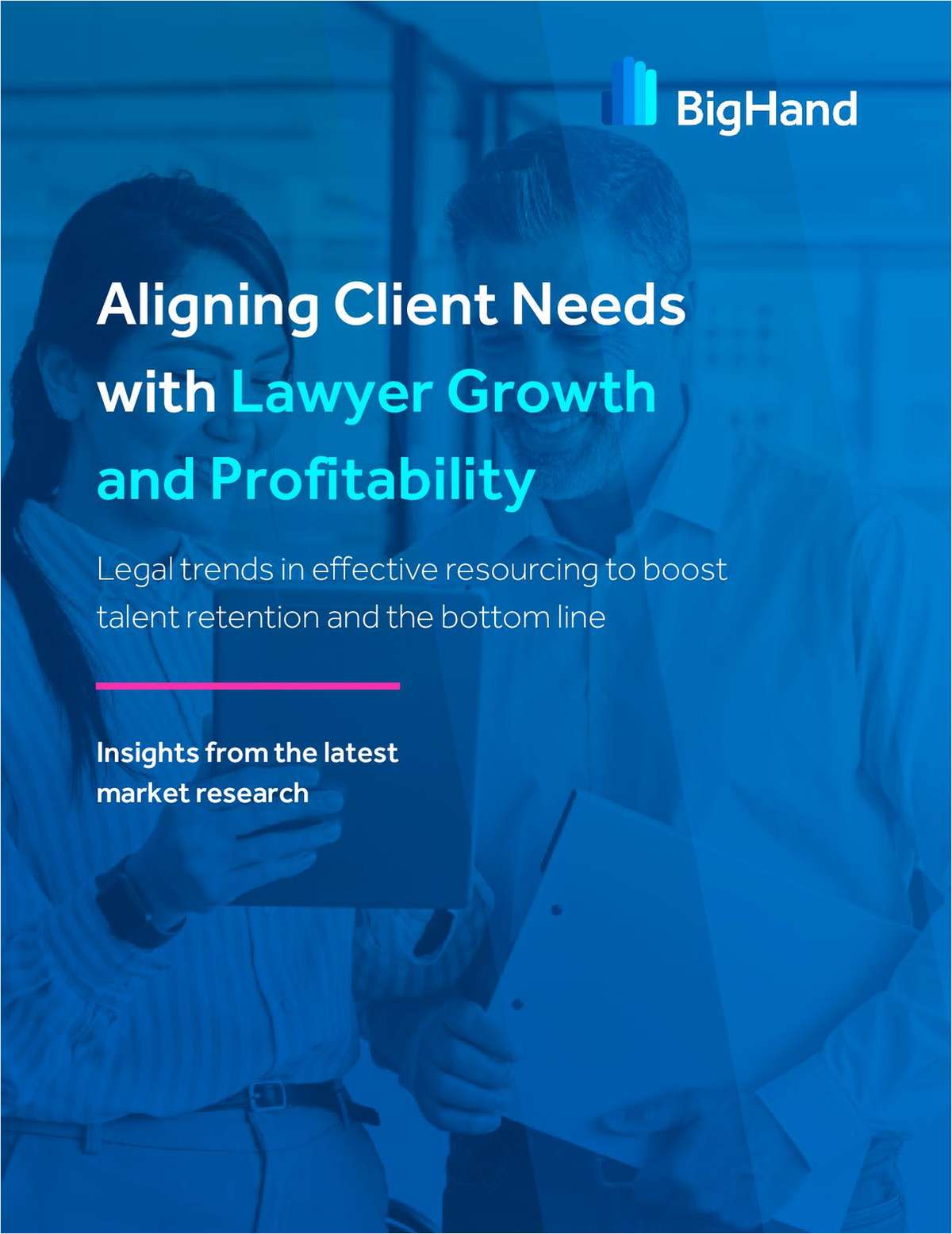Winging It No Longer, Law Firms Bring in the Diversity Professionals
With prominent partners leaving to start their own inclusion-focused ventures, and more law firms adding chief diversity officers to their management ranks, advancing diversity is becoming serious business.
September 26, 2018 at 02:22 PM
7 minute read
 Hilarie Bass. Photo: J. Albert Diaz/ALM
Hilarie Bass. Photo: J. Albert Diaz/ALM
As law firms and legal departments struggle to speed up racial and gender diversity in the profession, a relatively new niche is taking shape in the industry.
From prominent partners leaving their law firms to launch new diversity ventures, to Am Law 100 firms creating new C-suite positions to manage inclusion efforts, what was once a hazy ambition has become a field of expertise—and a career path for more lawyers.
Earlier this month, former American Bar Association president and Greenberg Traurig co-president Hilarie Bass announced that she would step away from the firm in December to found the Bass Institute on Diversity and Inclusion, dedicated to addressing issues affecting women and minorities across industries.
Miami-based Bass isn't alone. Barnes & Thornburg private equity and M&A partner Mandy Price teamed up earlier this year with former Sidley Austin counsel and former Weil, Gotshal & Manges colleague Starlet Carter to co-found Dallas-based diversity and inclusion firm Kanarys Inc.
Just last week, Michelle Silverthorn, a former Schiff Hardin associate, announced she would be leaving her position as diversity and education director at the Illinois Supreme Court Commission on Professionalism to found her own diversity education and consulting firm, Inclusion Nation.
The trend is far from brand new. Patricia Gillette, who left the partnership at Orrick, Herrington & Sutcliffe in 2015, has been speaking and consulting with firms on gender diversity and equality issues for years. Outside the legal profession, diversity and inclusion training and consulting has been a feature of the workplace for decades. (The Conference Board Inc. held its 22nd annual D&I conference this summer.)
But diversity professionals said there's a new urgency to tackle the issue in the legal industry.
According to Silverthorn, that's driven by ”the realization that we haven't moved the needle in the legal profession,” and frustration among both law firms and clients on the sluggish progress.
“Law firms have truly put into place so many different initiatives over the past 20 years,” Silverthorn noted, often under pressure from clients. But over the past two decades, the number of women and minorities in the profession have not drastically changed—especially among law firm partners.
Women made up only 19 percent of equity partners in law firms in 2017, according to the National Law Journal's Women in Law Scorecard, compared to 16 percent a decade before.
“I think 30 years ago people assumed the problem would take care of itself, and I don't think anyone realized the consequences of not addressing it appropriately,” said Bass.
After 37 years in Big Law, Bass is stepping away from Greenberg Traurig for what she sees as a continuation of her work as ABA president, where she spearheaded a number of initiatives including a study on why women leave the profession.
“The reason I decided it was time to commit full time to move the needle on this issue is because I believe we now know what we need to do,” Bass said. It isn't simply about diversity committees and women's initiatives anymore. It's about creating objectives and metrics for issues like promotion and compensation to make measurable differences, she said.
“I just felt that if we really want to solve this problem and ensure that we're not having the same conversation 30 years from now, we need to get much more granular as far as what we need to do differently,” she said.
GETTING SERIOUS
Silverthorn and Bass both agree that they've seen increasing commitment from law firms.
Bass points to the response she received at the start of the ABA's Achieving Long-Term Careers for Women in Law initiative.
“When I came up with this initiative we knew it was going to be expensive, and it was not the type of research that the ABA would typically fund,” Bass said. So the ABA sent out letters stressing the program's importance and asking for support to help pay for the research.
“We, with a single letter, got more than $500,000 in checks back from law firms,” Bass said. “And I know what it's like to ask a law firm for money because I'm on the other side.”
Bass said she also realized there's growing recognition of the economic cost, if nothing else, of having women and minorities leave behind law firms after the firms have invested in their training.
“I see this as a real moment in time that there's recognition that there is a problem and there's an economic incentive on law firms that they better figure out how to fix it,” Bass said.
Another sign that firms are focused on the issue: the rise of the law firm chief diversity officer. Just since June, the partnerships at Fisher & Phillips, Locke Lord and Shearman & Sterling each created such roles at their firms for the first time.
New York-based Sandra Bang, who was named Shearman & Sterling's chief diversity and talent strategy officer, will also work with senior partner David Beveridge on a new diversity and inclusion task force at the firm. “The firm, along with its senior leaders and everyone else—partners, associates, business services—really thought about how can we, as a firm, take this to the next level,” Bang said after her appointment last week.
VIEW FROM THE OUTSIDE
As firms pursue diversity efforts on their own, what role can outside consultants play?
Silverthorn said it's partly about perspective. “What a diversity consultant can do is provide that external viewpoint,” she said.
Silverthorn's new initiative, which will officially launch on Nov. 1, will work with law firms and other businesses on diversity and inclusion efforts, with a particular focus on millennials and their younger colleagues, Gen Z'ers.
“I think you still do need to have your in-house person in your law firm whose able to implement the different initiatives,” she said, noting that some smaller law firms might not be able to afford a full-time in-house diversity coordinator. “But I also think it's important that you bring in someone from the outside who can take a really sober look at what has been working and what hasn't been working.”
Many law firms will bring in consultants for an hour or two during lunch or for an all-day workshop.
“We do have different price levels, different arrangements, different fees that consultants charge, and it is enough for a lot of people to make a living,” Silverthorn said.
While there are nonprofits that conduct research and partner with law firms, most D&I consultancies are for-profit companies, like Silverthorn's.
“People do this out of the goodness of their hearts [and] they do this because they want change,” she said. “And they do this because they have families to feed and loans to pay off and a mortgage.”
Read More:
Greenberg Traurig Co-President Hilarie Bass is Stepping Down to Start a Nonprofit
Shearman & Sterling Aims to Boost Diversity With New C-Suite Role
This content has been archived. It is available through our partners, LexisNexis® and Bloomberg Law.
To view this content, please continue to their sites.
Not a Lexis Subscriber?
Subscribe Now
Not a Bloomberg Law Subscriber?
Subscribe Now
NOT FOR REPRINT
© 2025 ALM Global, LLC, All Rights Reserved. Request academic re-use from www.copyright.com. All other uses, submit a request to [email protected]. For more information visit Asset & Logo Licensing.
You Might Like
View All
Law Firms Expand Scope of Immigration Expertise Amid Blitz of Trump Orders
6 minute read

Am Law 100 Lateral Partner Hiring Rose in 2024: Report

JCPenney Seeks Return of More Than $1.1M From Jackson Walker For Bankruptcy Work
3 minute readTrending Stories
- 1Uber Files RICO Suit Against Plaintiff-Side Firms Alleging Fraudulent Injury Claims
- 2The Law Firm Disrupted: Scrutinizing the Elephant More Than the Mouse
- 3Inherent Diminished Value Damages Unavailable to 3rd-Party Claimants, Court Says
- 4Pa. Defense Firm Sued by Client Over Ex-Eagles Player's $43.5M Med Mal Win
- 5Losses Mount at Morris Manning, but Departing Ex-Chair Stays Bullish About His Old Firm's Future
Who Got The Work
J. Brugh Lower of Gibbons has entered an appearance for industrial equipment supplier Devco Corporation in a pending trademark infringement lawsuit. The suit, accusing the defendant of selling knock-off Graco products, was filed Dec. 18 in New Jersey District Court by Rivkin Radler on behalf of Graco Inc. and Graco Minnesota. The case, assigned to U.S. District Judge Zahid N. Quraishi, is 3:24-cv-11294, Graco Inc. et al v. Devco Corporation.
Who Got The Work
Rebecca Maller-Stein and Kent A. Yalowitz of Arnold & Porter Kaye Scholer have entered their appearances for Hanaco Venture Capital and its executives, Lior Prosor and David Frankel, in a pending securities lawsuit. The action, filed on Dec. 24 in New York Southern District Court by Zell, Aron & Co. on behalf of Goldeneye Advisors, accuses the defendants of negligently and fraudulently managing the plaintiff's $1 million investment. The case, assigned to U.S. District Judge Vernon S. Broderick, is 1:24-cv-09918, Goldeneye Advisors, LLC v. Hanaco Venture Capital, Ltd. et al.
Who Got The Work
Attorneys from A&O Shearman has stepped in as defense counsel for Toronto-Dominion Bank and other defendants in a pending securities class action. The suit, filed Dec. 11 in New York Southern District Court by Bleichmar Fonti & Auld, accuses the defendants of concealing the bank's 'pervasive' deficiencies in regards to its compliance with the Bank Secrecy Act and the quality of its anti-money laundering controls. The case, assigned to U.S. District Judge Arun Subramanian, is 1:24-cv-09445, Gonzalez v. The Toronto-Dominion Bank et al.
Who Got The Work
Crown Castle International, a Pennsylvania company providing shared communications infrastructure, has turned to Luke D. Wolf of Gordon Rees Scully Mansukhani to fend off a pending breach-of-contract lawsuit. The court action, filed Nov. 25 in Michigan Eastern District Court by Hooper Hathaway PC on behalf of The Town Residences LLC, accuses Crown Castle of failing to transfer approximately $30,000 in utility payments from T-Mobile in breach of a roof-top lease and assignment agreement. The case, assigned to U.S. District Judge Susan K. Declercq, is 2:24-cv-13131, The Town Residences LLC v. T-Mobile US, Inc. et al.
Who Got The Work
Wilfred P. Coronato and Daniel M. Schwartz of McCarter & English have stepped in as defense counsel to Electrolux Home Products Inc. in a pending product liability lawsuit. The court action, filed Nov. 26 in New York Eastern District Court by Poulos Lopiccolo PC and Nagel Rice LLP on behalf of David Stern, alleges that the defendant's refrigerators’ drawers and shelving repeatedly break and fall apart within months after purchase. The case, assigned to U.S. District Judge Joan M. Azrack, is 2:24-cv-08204, Stern v. Electrolux Home Products, Inc.
Featured Firms
Law Offices of Gary Martin Hays & Associates, P.C.
(470) 294-1674
Law Offices of Mark E. Salomone
(857) 444-6468
Smith & Hassler
(713) 739-1250










